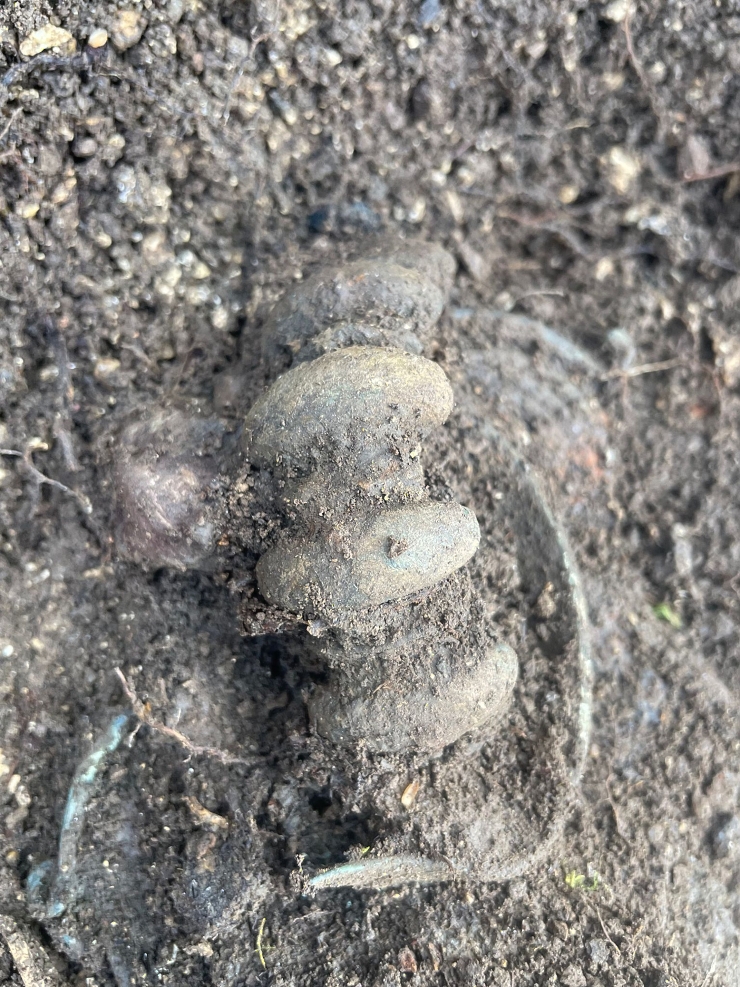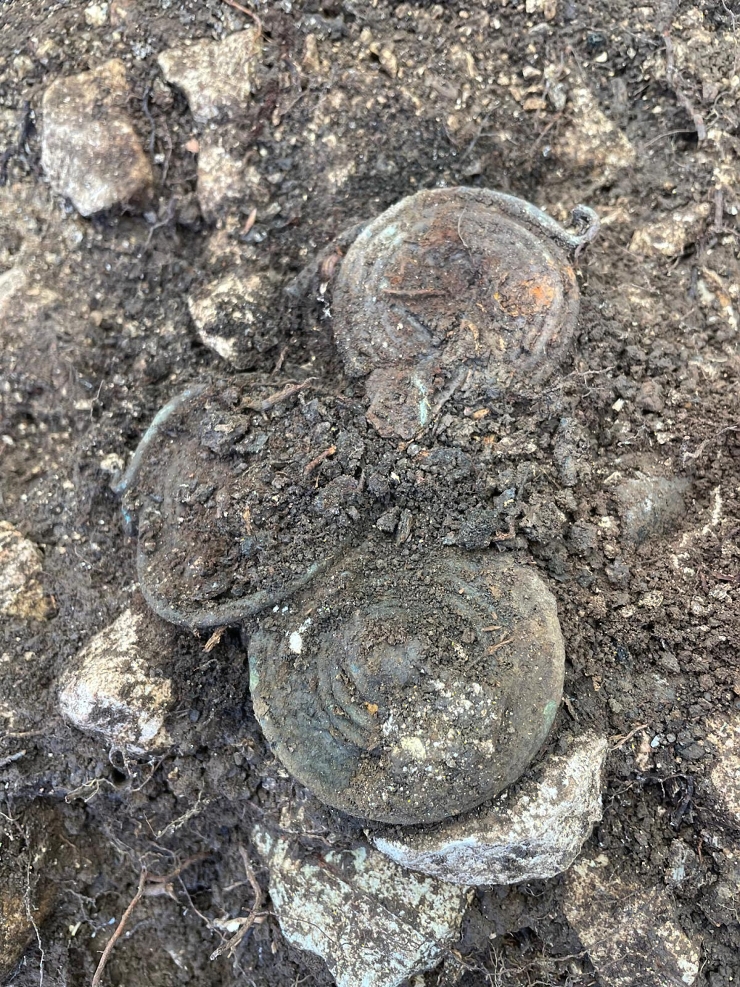 paráda 👍😊
paráda 👍😊
Unique Iron Age burial may rewrite the textbooks
Categories: Nálezy nejenom s detektorem v západní Evropě
An over 2,500-year-old urn burial with bronze jewellery and leakingtextile fragments that could be the first evidence of cremated remains being placed in bags. Also discovered in the grave were bronze spiral fibulae and a bracelet, a bronze knife blade with preservedfragments of a wooden handle, part of a metal belt fitting and animal bones from the sacrifices.
High up in the Salzberg valley is one of the most important prehistoric burial sites in Europe associated with the operation of salt mines. The local salt was already known to Neolithic people 7,000 years ago, but systematic salt mining only began in the 16th century BC. The mines reached their peak between 850 BC and about 350 BC.
Luxury jewellery and imported goods from all over the then-known world have been found in the graves, testifying to the great wealth and far-reaching trade relations that salt mining in Hallstatt brought. The variety, quality, and distinctiveness of the artifacts found here have led researchers to use "Hallstatt" as the name of the culture and the entire period of European prehistory (8th-5th centuries BC).
The finds were densely stacked in the most recently discovered grave, so it was not obvious at first that textile remains were preserved. Particularly on the undersides of the massive ribbed bracelet and spiral discs - probably fibulae used to fasten clothing. All the bronze objects were deliberately damaged. Given the grave furnishings, archaeologists assume that this is a female burial, but only subsequent analysis will prove this.
The textile remains on the bronze artefacts may be the first archaeological evidence that textile bags were once used to contain cremated remains. The local cremated remains tend to be very compact, so archaeologists have long suspected that they were placed in organic bags whose material had decomposed over millennia. Moreover, urns are very rarely found in the Hallstatt burial site compared to other contemporary burial sites.
"What is remarkable, however, is not only the good state of preservation of the textiles and jewellery that were placed in the grave," explained Johann Rudorfer, researcher in the prehistory department of the NHM Vienna and head of the Obertag. research team's excavations, "but we are also inspired by the fact that we have been able to identify a clearly recognizable burial pit. The area was extensively archaeologically explored in the 19th century, but little attention was paid to some details, such as the construction of the grave," he added.
The burial site was first discovered in 1846 by Johann Georg Ramsauer, a salt mine manager who worked there from the age of 13 as a labourer who later worked his way up. When he discovered the first grave, he literally turned into a meticulous amateur archaeologist. Between 1846 and 1863 he directed the excavation of the Hallstatt cemetery and documented everything he found with incredibly detailed drawings.
In 17 years of excavations, Ramsauer and his team uncovered over 980 graves containing nearly 20,000 objects. He thought they had found everything there was to find, but in the 1930s more graves were discovered. In 1992, annual excavations began, during which more amazing finds were uncovered and documented. The latest grave suggests that the burial site is even larger than previously thought. Archaeologists estimate that there may be another 4,000 to 5,000 unexplored graves at the site.
Roman Nemec
Sources: newsweek.com, thehistoryblog.com, arkeonews.net, nhm-wien.ac.at

massive bronze bracelet

spirals in situ

densely packed remains with grave goods

Iron Age urn grave

Site Hallstatt

lidar image of the site

detail of textile fibres
The article is included in categories:







